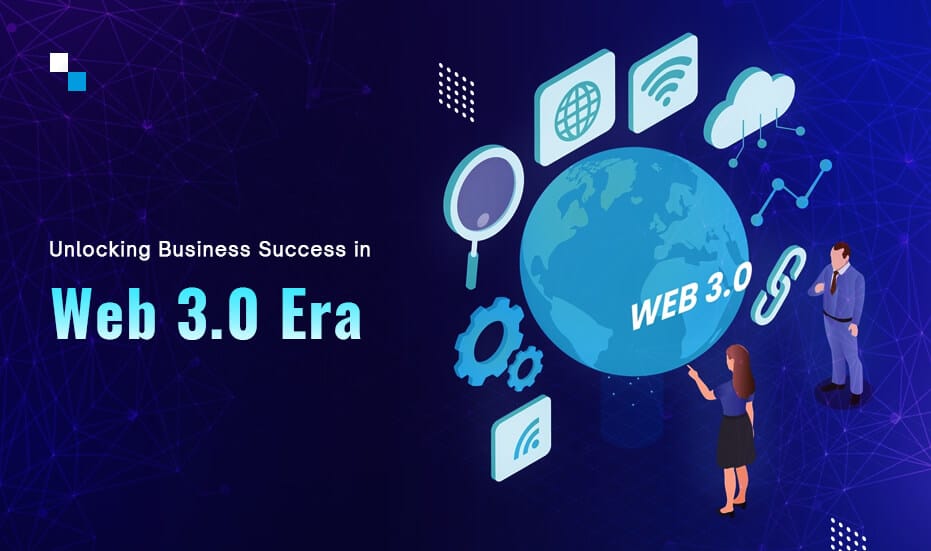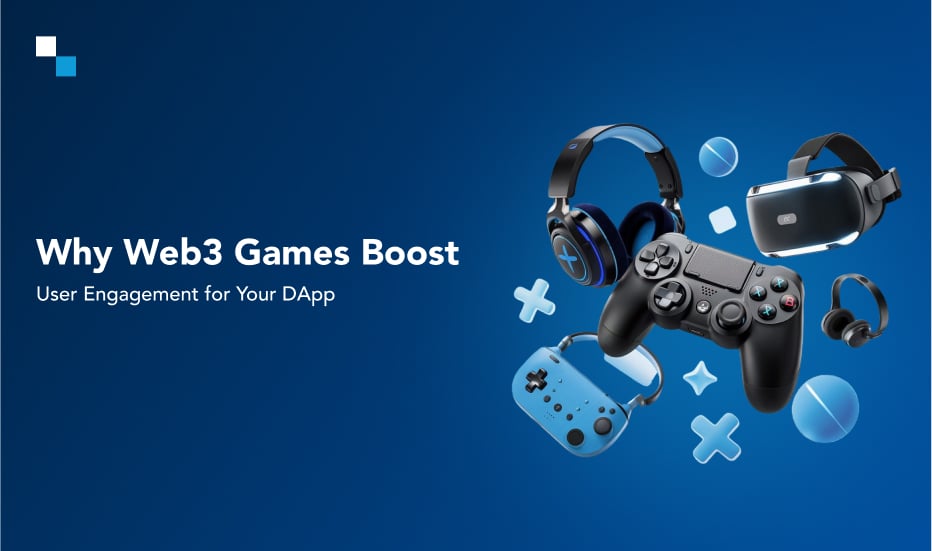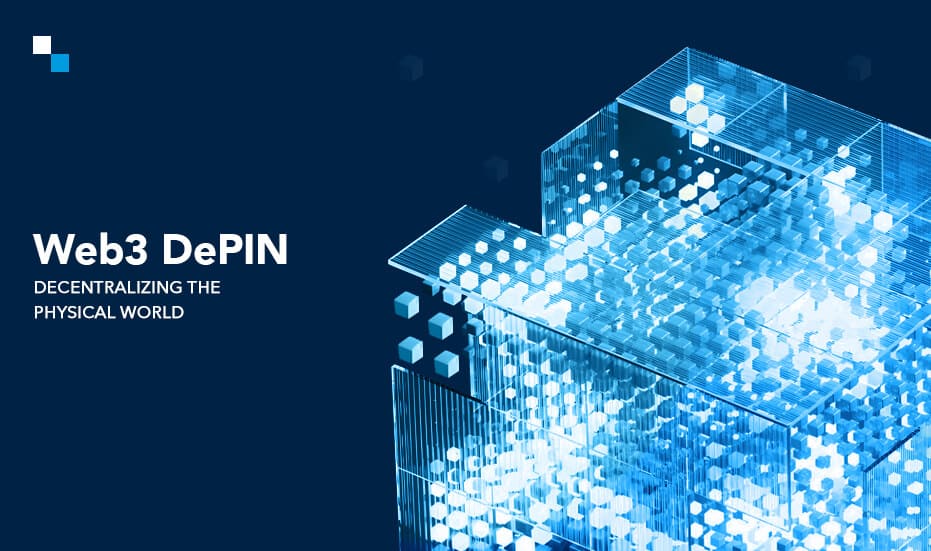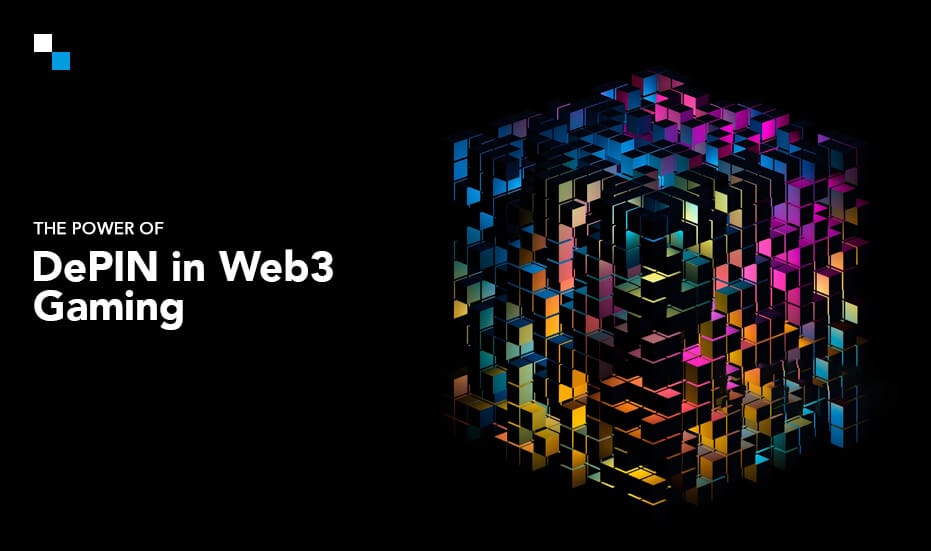
Tokenization: Revolutionizing the Venture Capital Industry
July 26, 2023
Top 5 Smart API Integrations That Can Drive Business Success in 2024
July 27, 2023Table of Contents
Introduction:
The digital age’s lexicon leaves users bewildered due to blurred meanings. The common misuse of “Internet” and “Web” interchangeably is the biggest example. They are two distinct terms, born at different times.
Over time, we have witnessed a remarkable evolution from the early iterations of the text-based, complex-to-navigate Internet, which facilitated limited user engagement. In contrast, the modern-day Web has raised the bar for interactivity, personalization, and decentralization. As we find ourselves in a transitional period, we are entering the era of Web 3.0 development, where data will flow seamlessly across decentralized platforms with distributed ownership and control.
For entrepreneurs dipping their toes into Web 3.0, understanding the potential changes from Web 2.0 to Web 3.0 becomes essential. Thus, let us delve into exploring the origins, core features, business benefits, and top trends of Web 3.0, which are emerging in the year 2023. Whether you are a tech enthusiast or an entrepreneur, this guide aims to equip you with the necessary knowledge to navigate the realm of Web3 development.
Web 2.0 Vs Web 3.0: Overview and Basic Difference
The evolution of the internet began with static pages that utilized frames and tables to position elements on webpages, pushing sets of information to users. Gradually, this medium underwent a transformative process, culminating in the current incarnation known as Web 2.0.
Web 2.0 prompted a paradigm shift in internet usage, introducing novel forms of interactivity, social connectivity, and user-generated content. Dynamic web applications superseded the monotonous pages of Web 1.0, while innovative web-centric business models emerged as an existential threat to businesses operating in parallel and allied industries.
During the Web 2.0 era, certain dominant companies experienced remarkable revenue growth, including Airbnb, Meta (formerly Facebook), Instagram, TikTok, Twitter, Uber, WhatsApp, Youtube, Google, Amazon, Netflix, and Apple, among others. These enterprises capitalized on the newfound interactivity and social elements to achieve phenomenal success.
People’s interest in Web3 development picked up steam as blockchain and security gained more prominence. As a relatively new concept, Web3’s definition remains somewhat ambiguous due to its ongoing emergence. Besides, there have been debates regarding its origin and spelling.
Web 3.0 development promises a more decentralized, user-centric version of the internet, empowering users to interact directly with applications and services. The hottest generation of the web forms a network of interconnected and sophisticated applications and services that run atop a decentralized infrastructure.
To achieve its goals, Web3 development strategically incorporates cutting-edge technologies such as artificial intelligence (AI), distributed ledger technology (DLT), and various state-of-the-art tools. The ultimate aim is to offer a secure, transparent, and reliable data-driven user interface where users have more control over their own data.
Given that Web 3.0 development retains many features of its predecessor, it becomes crucial for forward-thinking businesses to comprehend the distinctions between the two generations. Let us now delve into exploring the key differences between Web 2.0 and the emerging Web 3.0.
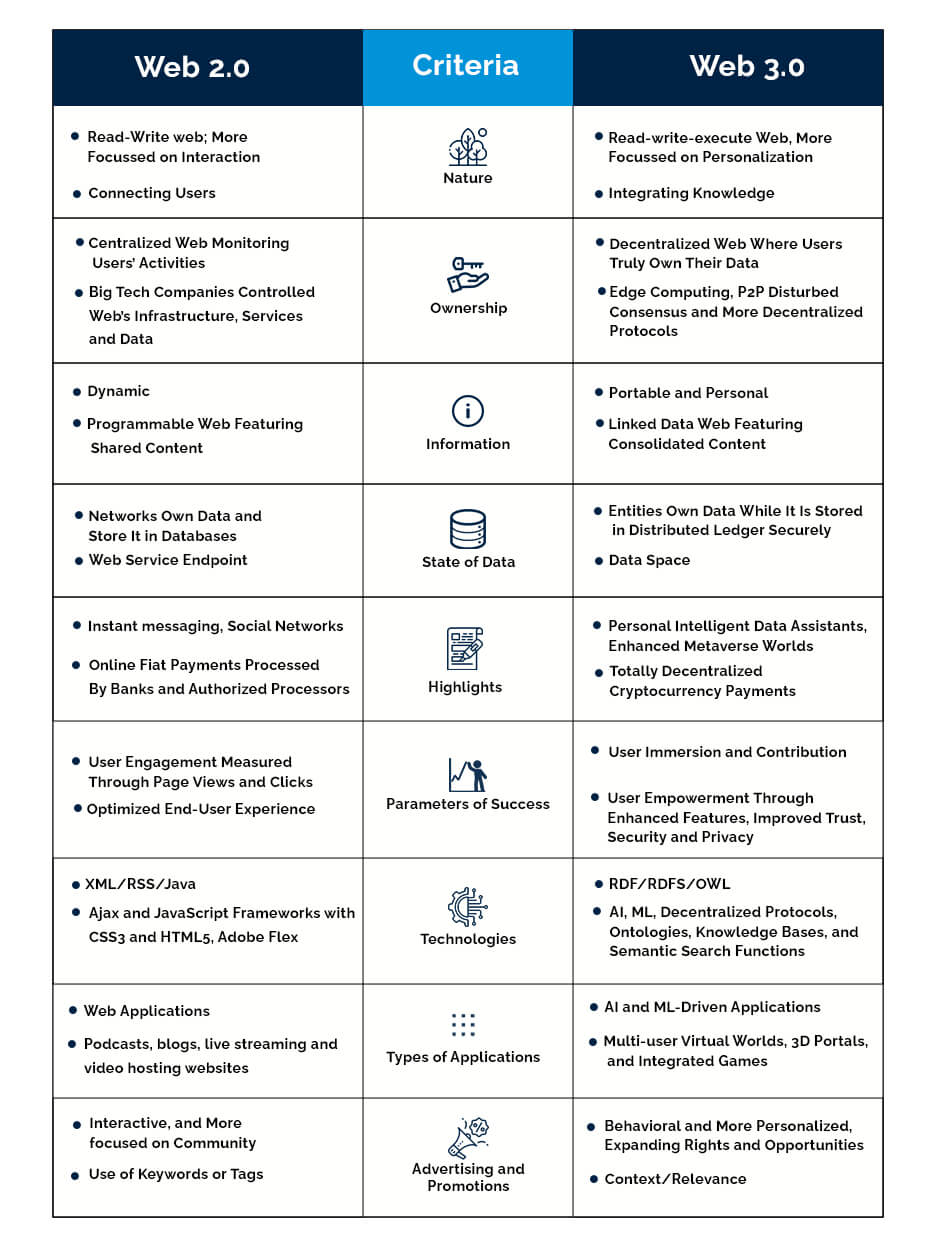
Core Features of Web 3.0 Development
- Data Decentralization
Web 3.0, in contrast to Web 2.0, which relies on centralized services or cloud servers, operates on a decentralized model where applications and services are interconnected. This departure from the traditional approach prevents tech giants from controlling and monetizing data. In the realm of Web 3.0 development, there is no single point of attack or central authority, resulting in a censorship-free environment. This shift grants users greater sovereignty, enhanced security, improved privacy, and a plethora of opportunities for both businesses and individuals.
- Use of Blockchain and Smart Contracts
Web3 development leverages DLT, commonly known as blockchain, to foster an environment of trust and permission-less transactions. Unlike Web 2.0, where third parties oversee transactions, Web 3.0 employs a network of validators who confirm these transactions, and the resulting record is stored on a public ledger for complete transparency, establishing a trustless economy. Central to this technological landscape are smart contracts, which execute transactions automatically once predefined conditions are met, effectively replacing the role of traditional third-party intermediaries. This innovation brings unprecedented efficiency and reliability to transactions within the Web 3.0 ecosystem.
- Decentralized Governance
The fundamental principle of Web 3.0 is decentralization, where power is not concentrated in the hands of a central authority but distributed among stakeholders through a decentralized autonomous organization (DAO). Web 3.0 development fosters user empowerment, as individuals holding DAO tokens possess voting rights and actively contribute to decision-making processes concerning protocols.
- Reconsidered Data Ownership and User Authentication Mechanisms
Web 3.0 eliminates the need for users to share their data to access various applications. In this read-write-own web paradigm, users can retain ownership of their data, allowing them to monetize it or keep it private. Contrary to Web 2.0, which relied on conventional authentication methods like user IDs, passwords, and biometrics, Web3 development adopts the use of private keys, securely stored on a ledger or within a protected e-wallet.
- More Use of Advanced AI Algorithms and Other Smart Technologies:
Web3 application development incorporates an array of advanced technologies, including AI, machine learning (ML), natural language processing (NLP), augmented reality (AR), virtual reality (VR), and more. Vital to this progress is edge computing, a critical technology for Web 3.0 development that enables seamless integration of smart technologies, thereby facilitating immersive user experiences.
- The “Interoperable”, and “Semantic” Web
The implementation of semantic web functionality enhances data distinction and query understanding capabilities, leading to more refined and relevant search results. In the interoperable Web 3.0, different applications and services can communicate and work together seamlessly. Various standard protocols and APIs connect decentralized systems, enabling data exchange and collaboration with various services.
- More Metaverse-Like Experiences
While Web 2.0 introduced the concept of the metaverse, Web 3.0 aims to advance this trend further by significantly enhancing the use, creation, and effectiveness of virtual worlds that simulate reality. In the past, metaverse experiences on Web 2.0 were primarily two-dimensional (2D) and lacked depth. However, Web 3.0 developers, collaborating with skilled designers, can breathe life into the metaverse by creating three-dimensional (3D) virtual reality (VR) spaces that offer lifelike spatial user experiences.
How is Web 3.0 Development Beneficial For Businesses?
We have comprehensively studied what Web 3.0 is, how it originated, and how it is different from Web 2.0. Let’s explore its advantages for businesses:
- Competitive Edge:
Businesses turning to Web3 development can attain a competitive advantage by offering a more secure experience to their customers where they have complete control over their data. As Web3 applications do not require personal information from users, customers can relish complete anonymity, thus building trust and fostering user loyalty.
- Increased Operational Efficiency:
Web 3.0 development services allow businesses to optimize their operations through the effective utilization of AI and deep learning technologies. This results in enhanced accuracy and speed, leading to streamlined business processes. Additionally, businesses can leverage smart contracts, which are autonomous and self-executing programs, to automate various operations, further improving efficiency and reducing the need for manual intervention.
- Enhanced Business Opportunities:
Web 3.0 development brings about significant advancements in data sharing and collaboration, leading to the creation of innovative business models and services. This empowerment enables businesses to scale up their operations, improve efficiency, enhance profitability, and bolster their competitiveness. In the Web 3.0 era, businesses are better equipped to manage their products, services, customers, and other vital aspects of their operations.
- Improved Customer Relationship Management:
The advent of Web 3.0 will have a profound impact on how small businesses interact with their customers. By leveraging Web3 development, which fosters interconnected and interoperable applications, businesses can gather data from various sources, including social media and browsing history. This comprehensive understanding of user behavior enables businesses to establish stronger and more personalized relationships with their customers, fostering loyalty and engagement.
- Supply Chain Management:
Web 3.0 development technologies can revolutionize supply chain management by enhancing the flow of information and communication within supply chain networks. This enables businesses and their customers to effectively track and manage raw materials, unfinished products, and work in progress (WIP). Increased transparency and efficiency in supply chain operations result in streamlined processes and improved collaboration among stakeholders.
- Advanced Marketing Measures:
With access to a wider range of real-time data from diverse sources, businesses can significantly enhance their marketing efforts. By utilizing Web3 development services, they can unlock new possibilities in data tracking, sophisticated segmentation, and market research. These insights pave the way for personalized marketing approaches, enabling businesses to better target their audiences and deliver more relevant messages, ultimately driving customer engagement and conversion rates.

Final Thoughts
In conclusion, Web 3.0 development not only transforms how businesses operate but also opens up new opportunities for growth, improved customer relationships, and more efficient supply chain management.
The evolution of the Web has been a continuous journey, and in the current digital age, businesses are striving to maintain a competitive edge. Embracing Web 3.0 development presents a wealth of opportunities for growth, innovation, and delivering personalized user experiences, making it a crucial catalyst for new-age entrepreneurial success.
Venturing into the exciting realm of Web 3.0 offers transformative prospects, and to navigate this landscape effectively, seek the expertise of seasoned thought leaders and technology experts at Antier. With their extensive knowledge and experience, they specialize in creating cutting-edge solutions based on the latest frameworks and methodologies.
By harnessing the potential of Antier’s web 3.0 developers, your business can position itself at the forefront of the digital revolution and remain competitive in an increasingly data-driven and interconnected landscape. They are well-equipped to assist you in unlocking the full potential of Web 3.0, enabling you to drive growth, enhance customer experiences, and innovate with confidence.
Get in touch with subject matter experts today to share your project requirements.
